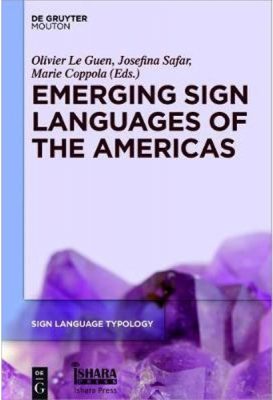A paper co-authored by Marie Coppola, “The noun-verb distinction in established and emergent sign systems” (Language 95, no. 2 (2019): 230-267), has won this year’s Best Paper in Language Award.
Congratulations to Marie and her co-authors: Natasha Abner, Molly Flaherty, Katelyn Stangl, Diane Brentari, and Susan Goldin-Meadow!

Abstract: In a number of signed languages, the distinction between nouns and verbs is evident in the morphophonology of the signs themselves. Here we use a novel elicitation paradigm to investigate the systematicity, emergence, and development of the noun-verb distinction (qua objects vs. actions) in an established sign language, American Sign Language (ASL), an emerging sign language, Nicaraguan Sign Language (NSL), and in the precursor to NSL, Nicaraguan homesigns. We show that a distinction between nouns and verbs is marked (by utterance position and movement size) and thus present in all groups–even homesigners, who have invented their systems without a conventional language model. However, there is also evidence of emerging crosslinguistic variation in whether a base hand is used to mark the noun-verb contrast. Finally, variation in how movement repetition and base hand are used across Nicaraguan groups offers insight into the pressures that influence the development of a linguistic system. Specifically, early signers of NSL use movement repetition and base hand in ways similar to homesigners but different from signers who entered the NSL community more recently, suggesting that intergenerational transmission to new learners (not just sharing a language with a community) plays a key role in the development of these devices. These results bear not only on the importance of the noun-verb distinction in human communication, but also on how this distinction emerges and develops in a new (sign) language.

